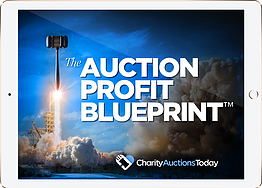School auctions, whether in person or online, are popular fundraising events that can significantly boost school funding for extracurricular activities, academic programs, scholarships, and more.
Today, auction software has become an essential tool for planning and executing successful auctions. From managing registrations and bids to tracking donations and payments, auction software provides critical functionalities that streamline the entire process.
However, many schools wonder about the costs associated with using auction software. Below, we’ll explore the factors that affect school auction software pricing and what to expect based on different types of solutions.
1. Types of Auction Software Pricing Models
The cost of school auction software varies greatly depending on the pricing model used by the software provider. Most auction software for schools is priced under one of these common models:
- Subscription-based pricing: Schools pay a monthly or annual fee, often with varying tiers based on features and capacity. This model is popular because it provides consistent and predictable costs.
- Transaction-based pricing: Some platforms charge a fee per transaction, such as a percentage of each bid or your total raised sum. While this can be cost-effective for smaller events, the costs can quickly add up for larger, high-revenue auctions.
- One-time licensing fee: Some auction software requires a one-time purchase for a permanent license. This is less common today but may be an option for schools that want a fixed cost with no recurring fees.
2. Factors Affecting the Cost of Auction Software
The pricing of auction software can depend on a variety of factors, including the number of expected bidders, the number of features required, and the level of customer support needed. Here’s a breakdown of key factors:
- Feature Set: The more features you need, the higher the cost. Standard features generally include bid tracking, donation processing, and event registration, while premium features may involve custom branding, real-time auction analytics, integration with other platforms (like payment gateways or CRMs), and mobile bidding capabilities. (All of these features are available on both of our pricing plans).
- Event Scale: Pricing can also vary based on the size of the event. Software for large-scale events with thousands of participants will cost more than software intended for smaller auctions due to the greater load on the system and additional customer service demands.
- Support Options: Some providers include only limited customer support, while others offer 24/7 assistance, dedicated account managers, and training, which can add to the cost.
- Customization and Integration: If your school requires custom solutions or integration with existing systems, you can expect additional charges. This is more common for schools with extensive requirements or those using more sophisticated donor management software.
- Add-Ons: Additional features such as data reporting, SMS notifications, ticketing for events, and donation receipts may not be included in the base price and can increase the overall cost. One platform’s add-on might be another’s standard feature, so be sure to ask about the ones you need.
3. Typical Pricing Ranges for School Auction Software
To give a clearer idea of what schools might spend on auction software, here are some pricing estimates based on the main pricing models:
- Entry-Level Software ($500 – $1,500 per event or annually): For small to medium-sized schools holding single events with basic features, entry-level software packages typically range from $500 to $1,500 per year or per event. These packages generally cover basic functions like auction item listing, mobile bidding, and payment processing. Entry-level software is ideal for schools looking to save money and who only need simple, straightforward tools for one-off events.
- Mid-Tier Software ($1,500 – $5,000 per event or annually): Schools with larger, more complex events, or those holding multiple events annually, can expect to spend between $1,500 and $5,000 for mid-tier options. This tier typically includes additional features, such as detailed reporting, donor tracking, and social media integration. Software in this range is often better equipped to handle moderate event sizes and multiple auctions throughout the year.
- Premium Software ($5,000+ per event or annually): For larger schools or districts hosting extensive auctions with high revenue, premium software solutions start at around $5,000 and can go up significantly. These top-tier platforms include advanced features such as fully branded pages, custom data integration, multi-event support, and dedicated customer service. Premium auction software often supports real-time analytics and in-depth customization, making it suitable for schools that expect a high volume of bids and donations.
CharityAuctionsToday offers flexible pricing for events of all sizes, and nearly all of our features are available to both one-time and subscription clients. Take a look at our comparison of 13 top auction sites to see which will best suit your needs, whether that’s us or another auction provider.
4. Additional Costs to Consider
Beyond the base price of the software, several additional costs can come into play:
- Setup Fees: Some providers charge a setup fee, typically ranging from $100 to $500, to help schools with initial configuration and training.
- Credit Card Processing Fees: If your auction software provider processes payments, there will likely be a credit card transaction fee, usually between 2.9% and 3.5% per transaction. It’s essential to understand these charges, as they can eat into profits if not accounted for.
- On-Site Support: For in-person events, schools may require on-site technical support to troubleshoot any issues. Providers may offer this for an additional fee, often around $500 to $1,500 per event.
5. Popular School Auction Software Options and Pricing Examples
Take a closer look at a few popular school auction software options, along with an overview of their pricing models to give a clearer picture of what’s available.
6. Choosing the Right Auction Software for Your School’s Budget
Selecting the right software requires balancing the event’s needs with your school’s budget. If your school runs smaller auctions, an entry-level or mid-tier platform may be sufficient. Larger schools or organizations hosting complex events should consider the premium solutions, which may offer better support, security, and integration.
Conclusion
Auction software can be a valuable investment for schools looking to streamline their fundraising efforts. While costs can range from a few hundred dollars to several thousand, careful planning and an understanding of your event’s needs will help in choosing the right tool within your budget. By examining software features, scaling requirements, and additional costs, your school can maximize its auction success while staying financially mindful.


